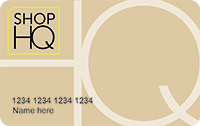Features
- Be creative and loop these cuff links through your button-holes at the neckline of your shirt.
- The high sheen of a polished finish keeps your jewelry young and refreshed for years to come!
- Easily loops through your cuffs for a trendy and fashion-forward look.
- Show your rugged side with Steel Impact. A brand curated with details of carbon fiber, steel cable and genuine leather for a unique accessory that helps you stand out from the crowd. Stainless steel is built to last.
Details
- Material Content: Base Metal
- Plating Type: Silvertone
- Primary Finish: Polished
- Length: 11/16in.
- Width: 11/16in.
- Height: 3/16in.
- Country of Origin: China
On the Mohs Scale, which measures the hardness of minerals, cubic zirconia is an 8.0 to 8.5. It is important to understand that hardness is not necessarily related to durability. Even though diamond is the hardest mineral (10.0 on the Mohs Scale), it can still be chipped or broken.
The only ways to tell the difference between cubic zirconia and diamond are by use of a thermal probe, by weighing the loose stone or by microscopic examination of surface features and inclusions. Cubic zirconia weighs approximately 65% more than diamond. Therefore, while a 6.25 mm round diamond weighs about 1.00 carat, the same size cubic zirconia weighs about 1.65 carats. If you know the weight of a cubic zirconia, you can figure out the diamond weight equivalent by multiplying the cubic zirconia weight by 0.6, or 60%.
Few natural diamonds on the market today are perfectly cut, and those that are cost much more than the usual diamond. Unleashing the fire, beauty and brilliance of a stone depends on its precise cut. Simulated diamonds are an excellent balance between quality, beauty and price.
Glossary
Brilliance: The white light leaving a jewel, traveling upward, which is visible to the eye. Brilliance is sometimes referred to as “sparkle.”
Dispersion: Flashes of rainbow colors. Also called “fire.”
Hardness: Resistance to scratching. The higher the number, the more resistant.
Luster: The shininess of a jewel.
Toughness: Resistance to breakage.
Zircon:
Zircon often suffers for its name’s similarity to “cubic zirconia,” the simulated diamond. The stone zircon, however, is actually a beautiful natural gemstone. It is named from the Persian word “zargun,” meaning “gold-colored.” This is despite the fact that it comes in a wide range of rainbow colors . The majority of zircons are brown or yellow-brown, while pure red and green are the most valuable colors. The yellow-red to reddish-brown variety is called “hyacinth.”
For many years, the most popular type of zircon was the colorless variety. More than any other natural stone, colorless zircons produce a brilliant sparkle similar to diamonds . The most popular color today tends to be the bright pastel blue variety. Sometimes called “starlite,” blue zircon has recently become considered an alternative birthstone for December.
Zircon is one of the heaviest gemstones, meaning that it will look smaller than other varieties of the same weight. It ranks a hardness between 6.5-7.5 on the Mohs Scale and is mined in Cambodia, Sri Lanka, Thailand, Myanmar and Australia.
Travelers during the 11th century wore zircon amulets for protection and to encourage welcome greetings on their journeys. In the Middle Ages, the stone was said to bring wisdom and prosperity to its owner. Hindu mythology even mentions the gem when referencing the Kalpa Tree, which was a glowing tree covered with gemstone fruit and leaves of zircon.










